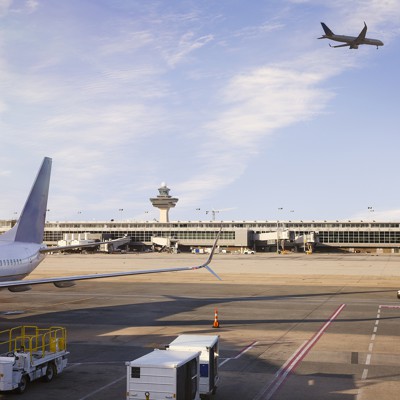The Federal Aviation Administration has given the green light for industry to start working on and turning in their proposals for a contract to stand up a new air traffic control system for managing U.S. airspace.
While the contract has no ceiling value at this time, the scale of the effort will be massive given the numbers of facilities and equipment that needs to be replaced. Automation will also be heavily emphasized in this program to near-completely overhaul the current setup of myriad systems supported by patchwork updates over several decades.
Bids for the appropriately-named “Brand New Air Traffic Control System” contract are due Sept. 21 and the FAA will pick a single prime integrator from that pool, according to the final solicitation released Thursday.
From there, the winner will have three-and-a-half years to implement the new system and be charged with doing so over two phases.
The first will focus on acquiring new equipment and conducting technology refreshes aimed at creating a backbone for the overall modernization effort. Radar, software, hardware and telecommunications networks are all part of that core infrastructure the FAA describes.
Phase two will be much more complex as it involves the modernization, integration and transformation of the services, systems and platforms that enable operations across the entire National Airspace System. The FAA estimates 74,000 pieces of equipment will be worked on.
The integrator’s responsibilities cover both the technical aspects of systems integration and managerial components, inclusive of subcontractor management and risk reduction.
One industry team has already declared its intention to pursue the contract. Parsons has enlisted IBM as a primary subcontractor for their partnership.
The FAA has structured the contract in a hybrid form to cover task orders of various types such as cost-plus award fee, cost-plus fixed-fee, cost-plus incentive fee, firm-fixed-price, time-and-materials and fixed-price.
Much of the program’s initial funding will come from a $12.5 billion down payment allotted in the One Big Beautiful Bill Act, which was signed into law in July.
Also in July, Transportation Secretary Sean Duffy told House Transportation and Infrastructure Committee members the current cost estimate of the overhaul stood at $31.5 billion at the time of his testimony.
The FAA’s newest workforce plan unveiled in August describes the agency’s goal of hiring 8,900 new air traffic controllers through 2028, including 2,000 in 2025. The Aviation Safety Workforce Plan calls for hiring about 4,600 safety inspectors and engineers through 2034.
The FAA’s push to upgrade air traffic control functions is not the only effort related to modernizing technology at U.S. airports. In July, the Transportation Security Administration started its search for new screening tools from industry in order to change how travelers are evaluated before boarding.
